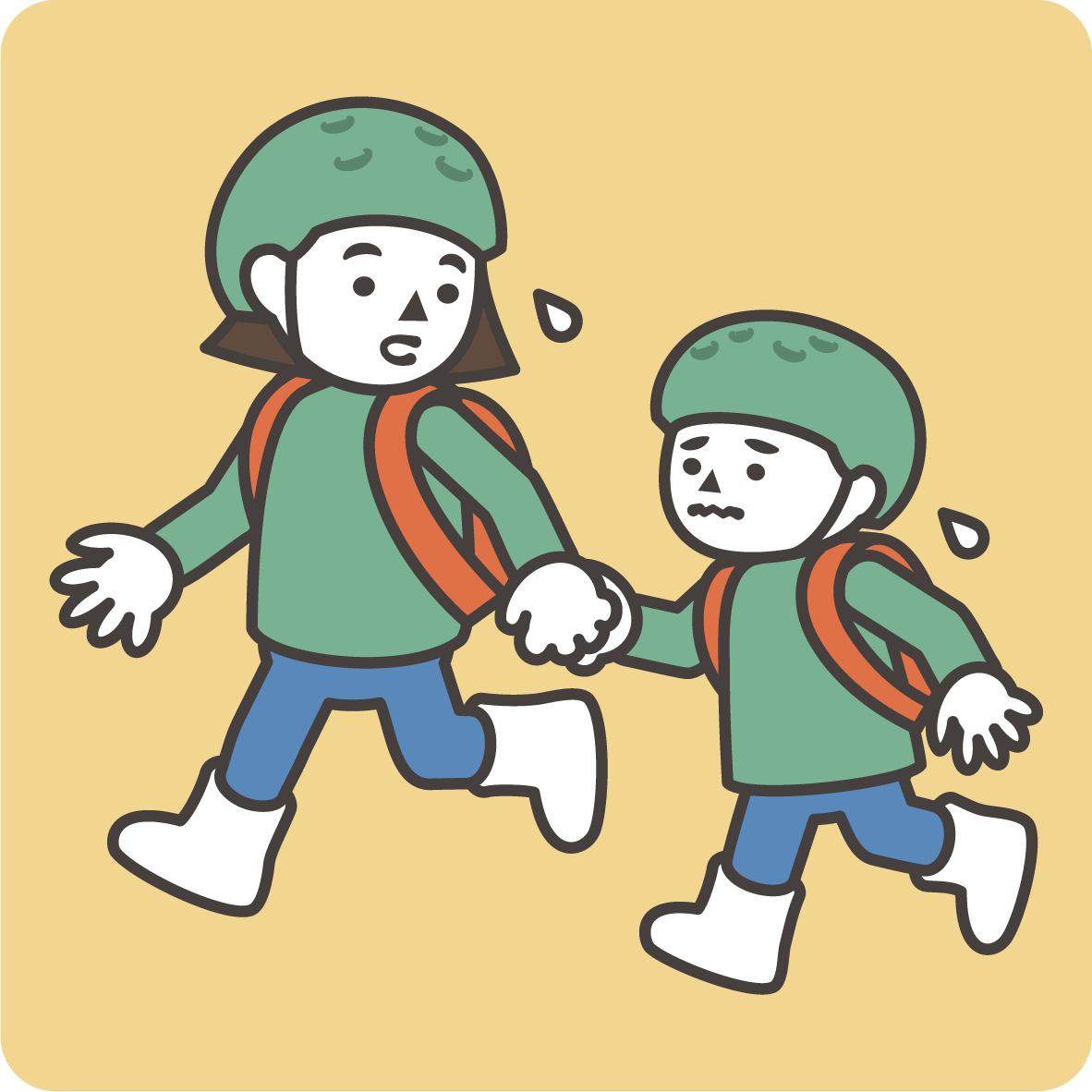
2 Evacuation
-
-
Places designated as evacuation spots include Evacuation Areas and Evacuation Centers.
-
Evacuation Areas (hinan basho)
Evacuation Areas are where people flee to immediately after a major earthquake.
Evacuations Areas can be identified by this image.
It's common for large parks or sports grounds to be Evacuation Areas.
Food and drinks may not be available.
You cannot stay overnight.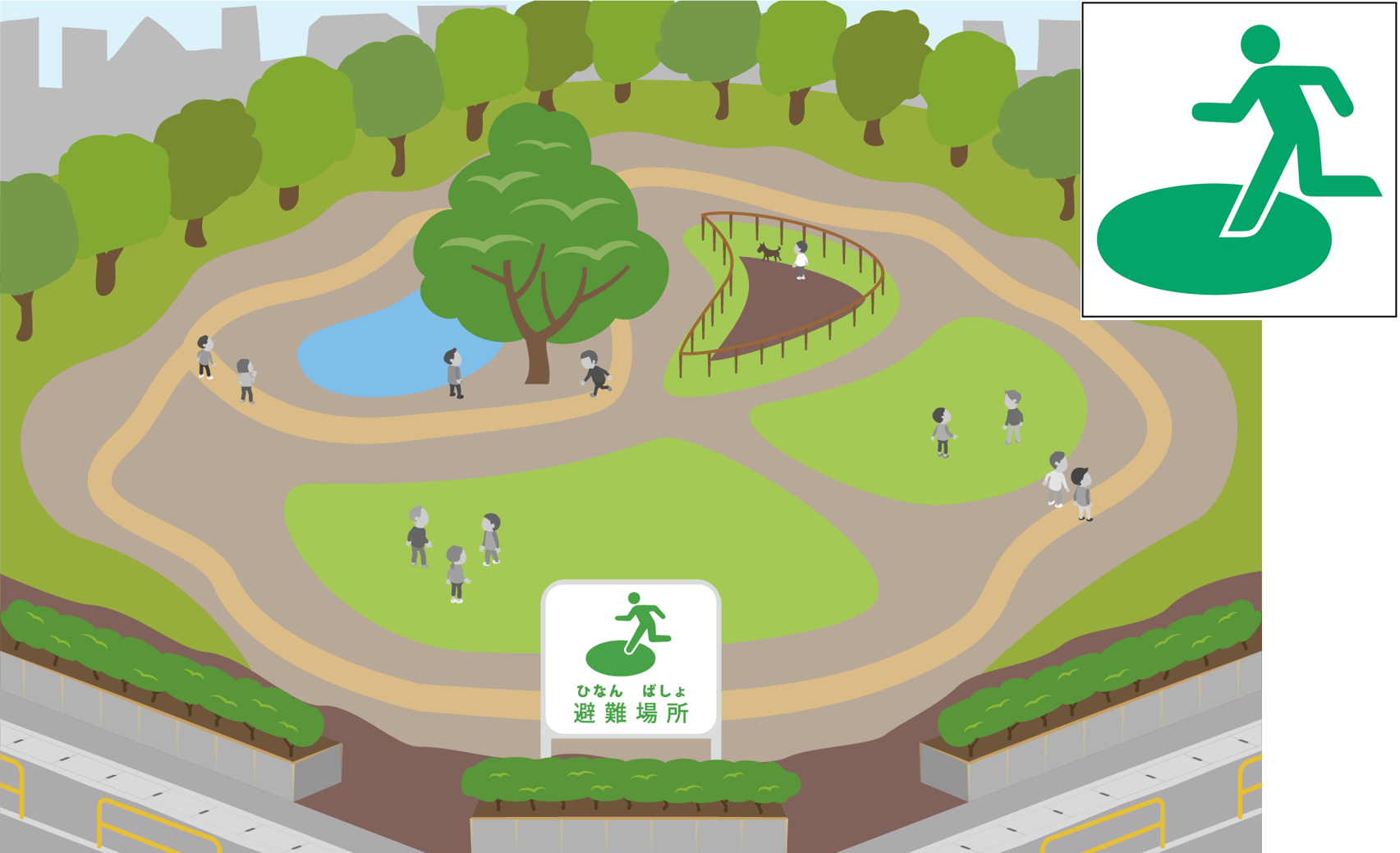
-
Evacuation Centers (hinanjo)
Evacuation Centers are places where people can stay if they cannot live in their homes because of a disaster.
Buildings that may become Evacuation Centers can be identified by this image.
People can stay overnight.
At Evacuation Centers, food, drinking water, blankets, and other necessities for daily life are available.
The locations that will be designated as Evacuation Centers are decided in advance.
In the event of a disaster, the local government will announce that certain schools and other buildings will become Evacuation Centers.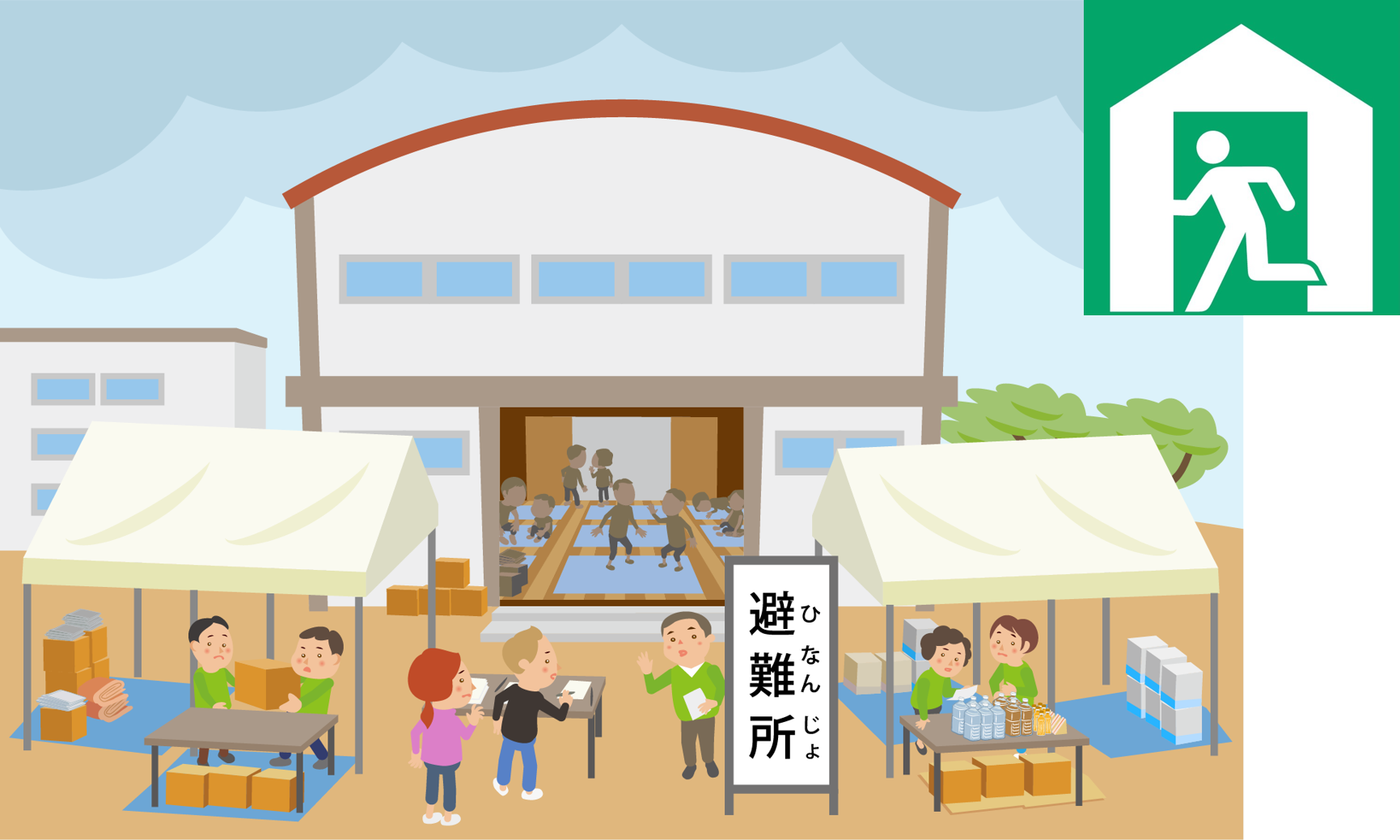
-
-
A tsunami may follow after a major earthquake.
If you are near the ocean, get as far away from the coast as you can and evacuate to a safe, elevated location as soon as possible.
If there is a Tsunami Evacuation Area or Tsunami Evacuation Building nearby, head for one of those.
Tsunami Evacuation Areas and Tsunami Evacuation Buildings can be identified by this image.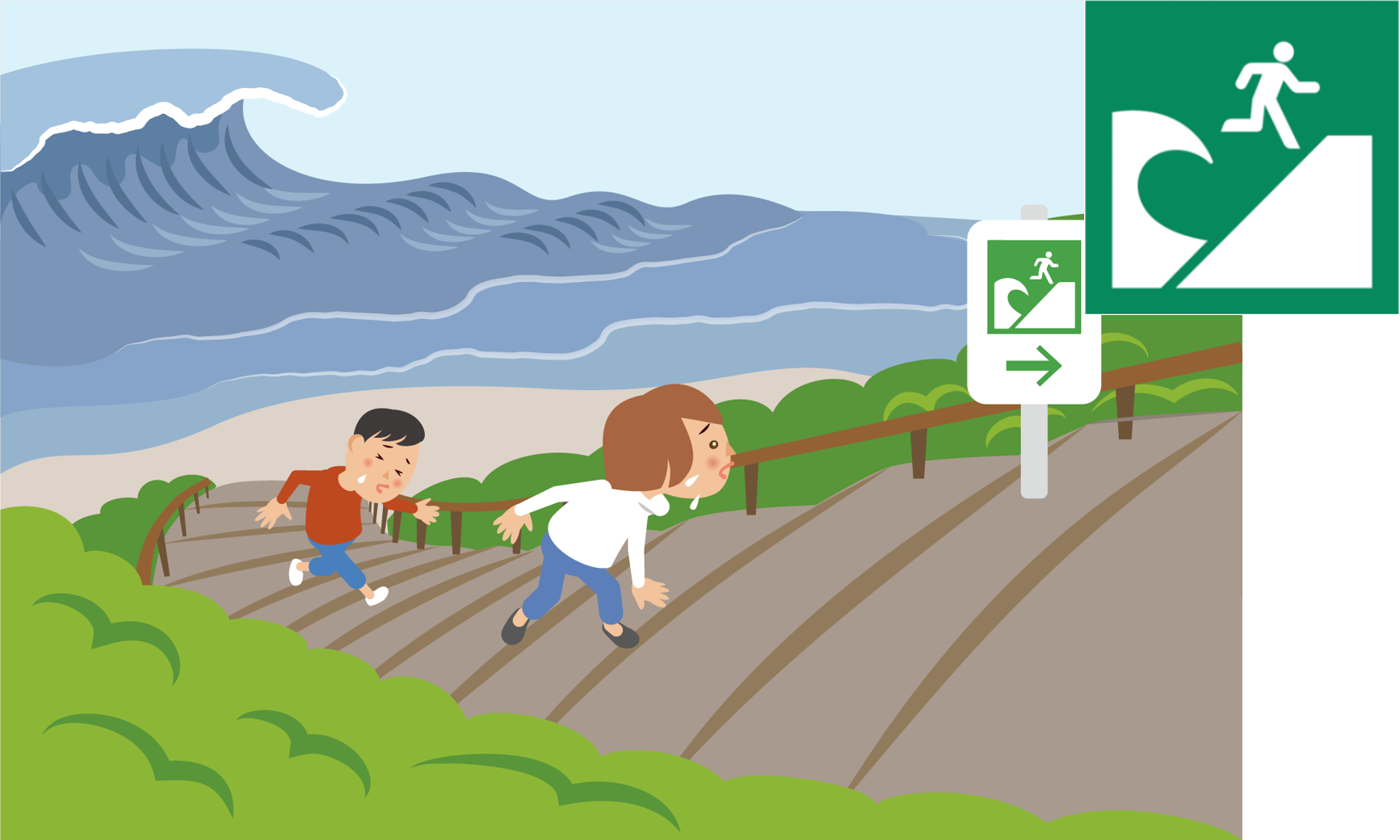
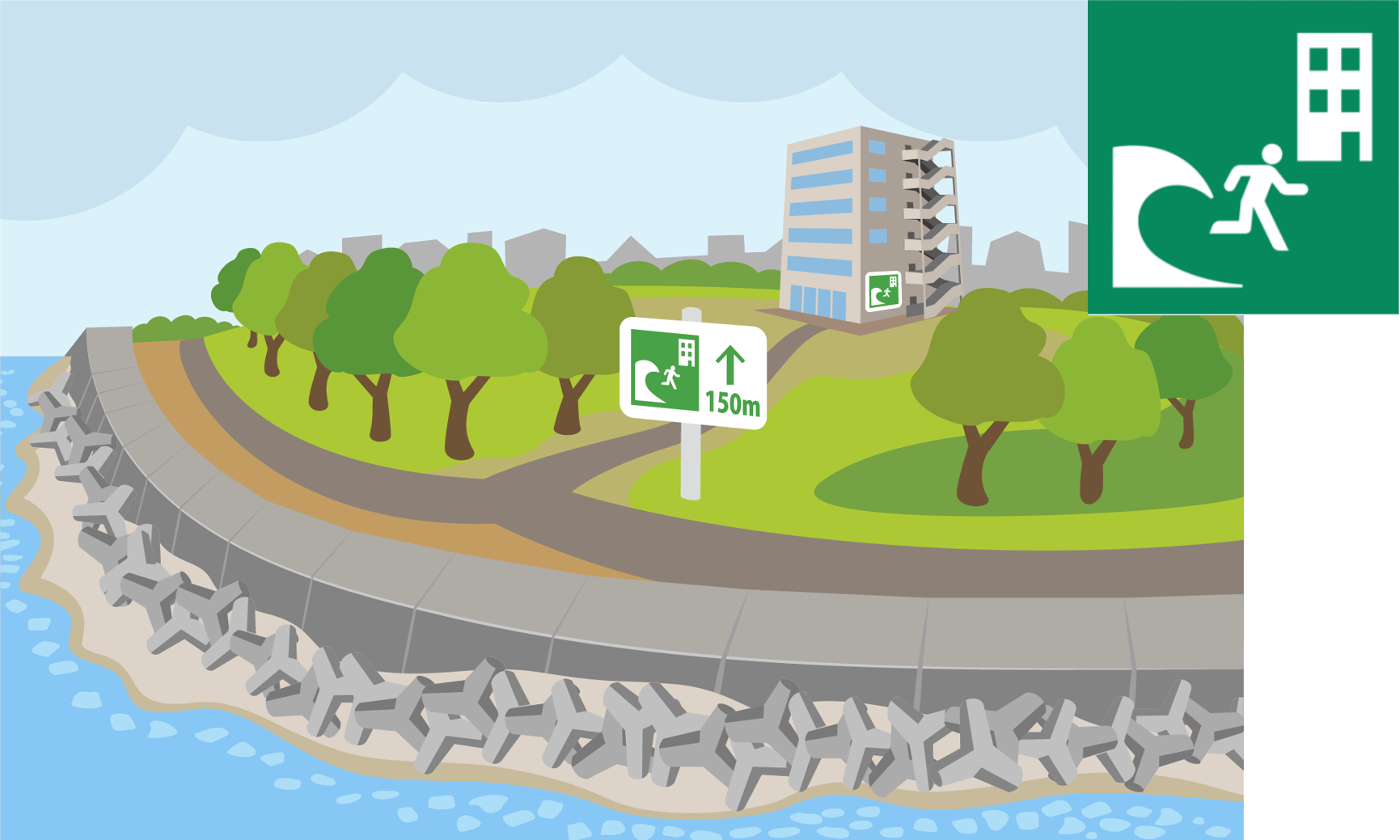
There may be a delay between the earthquake and the tsunami. Pay attention to TV, radio and public disaster prevention radio broadcasts.
Tsunamis may travel up rivers.
If you are told the tsunami poses a risk, stay far away from rivers.☞ Glossary: Tsunami
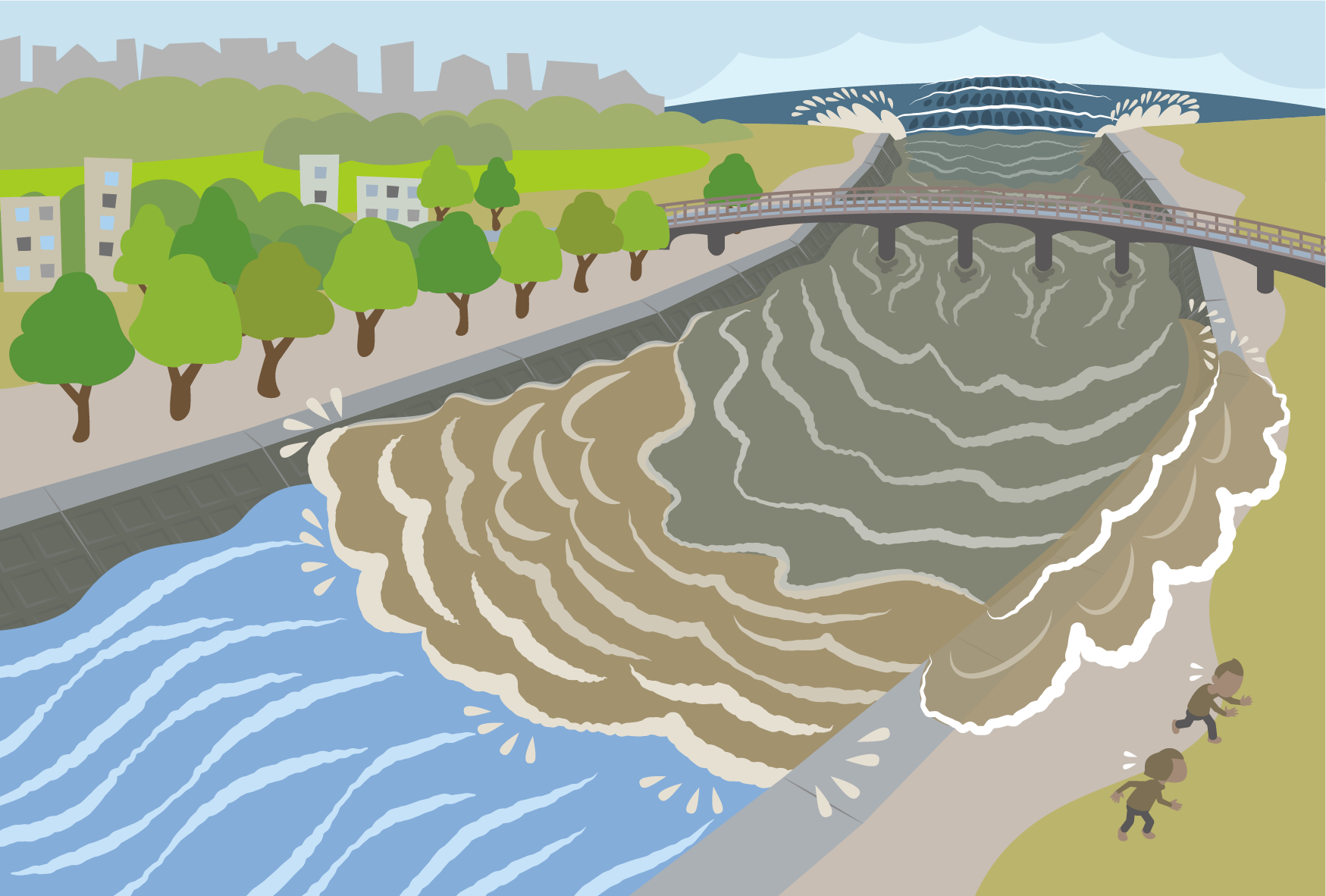
-
-
If your present location is in danger, when a major typhoon is forecast, it is important to evacuate early by going to the home of a friend or family member who lives in a safe area, before train services are suspended. Before heavy rains and typhoons, Evacuation Centers (hinanjo) may be set up in your city.
Check hazard maps to determine where you should evacuate to.
Some Evacuation Centers may not be usable in the event of heavy rains due to proximity to rivers, etc.
Be sure to check in advance.More information about Evacuation Centers can be found on this page.
■About Evacuation Center (TIPS)https://tabunka.tokyo-tsunagari.or.jp/disaster/howto/shelter.html (Japanese)
https://tabunka.tokyo-tsunagari.or.jp/english/disaster/howto/shelter.html (English)
See the following page for information on reading flood hazard maps and where to evacuate to.
■About Flood Hazard Maps (TIPS)https://tabunka.tokyo-tsunagari.or.jp/disaster/howto/hazard_maps.html(Japanese)
https://tabunka.tokyo-tsunagari.or.jp/english/disaster/howto/hazard_maps.html(English)
-
-
Check the local government website for the city/ward you are in.
Do a web search for "evacuation center", "emergency shelter" or "hinanjo" along with the name of your city.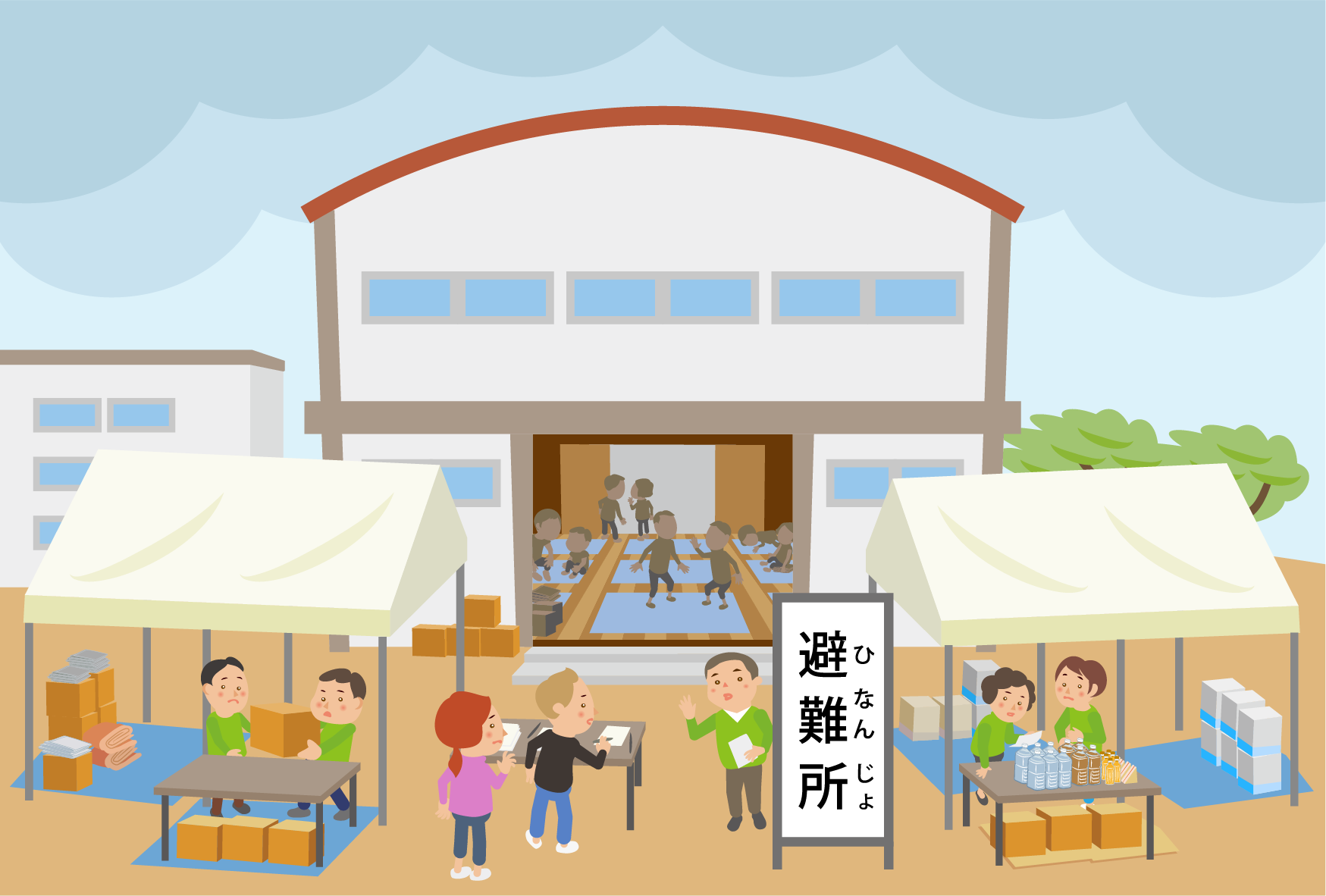
-
Check the following websites.
■Tokyo Metropolitan Prevention Map
(Disaster Prevention Division, Bureau of General Affairs, Tokyo Metropolitan Government)https://map.bosai.metro.tokyo.lg.jp/(Machine translation only - English, Chinese, Korean)
If you can't find your local Evacuation Areas and Centers, ask those around you or inquire with the city office.
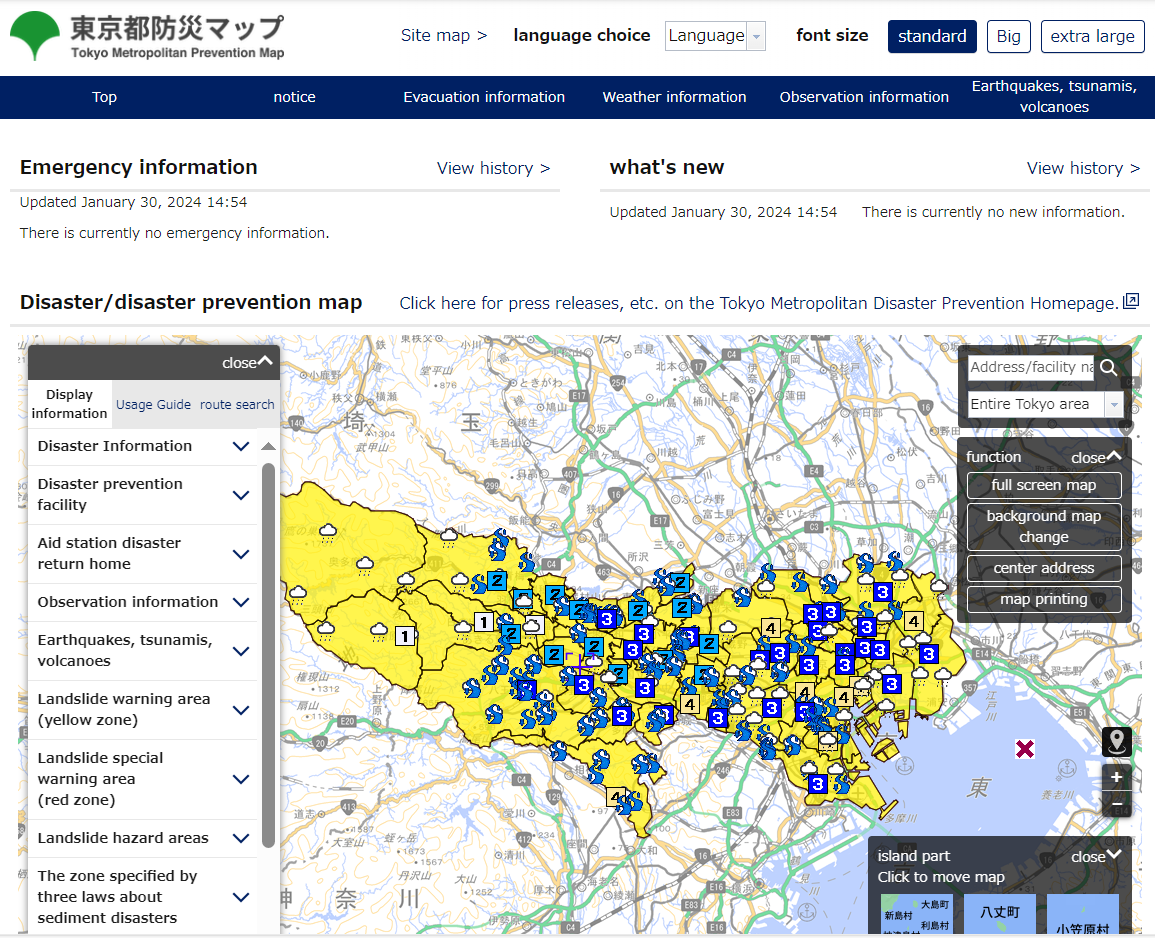
-
Check the following page for information on what to take to the Evacuation Center and the rules you should follow there.
■About Evacuation Center (TIPS)https://tabunka.tokyo-tsunagari.or.jp/disaster/howto/shelter.html(Japanese)
https://tabunka.tokyo-tsunagari.or.jp/english/disaster/howto/shelter.html(English)
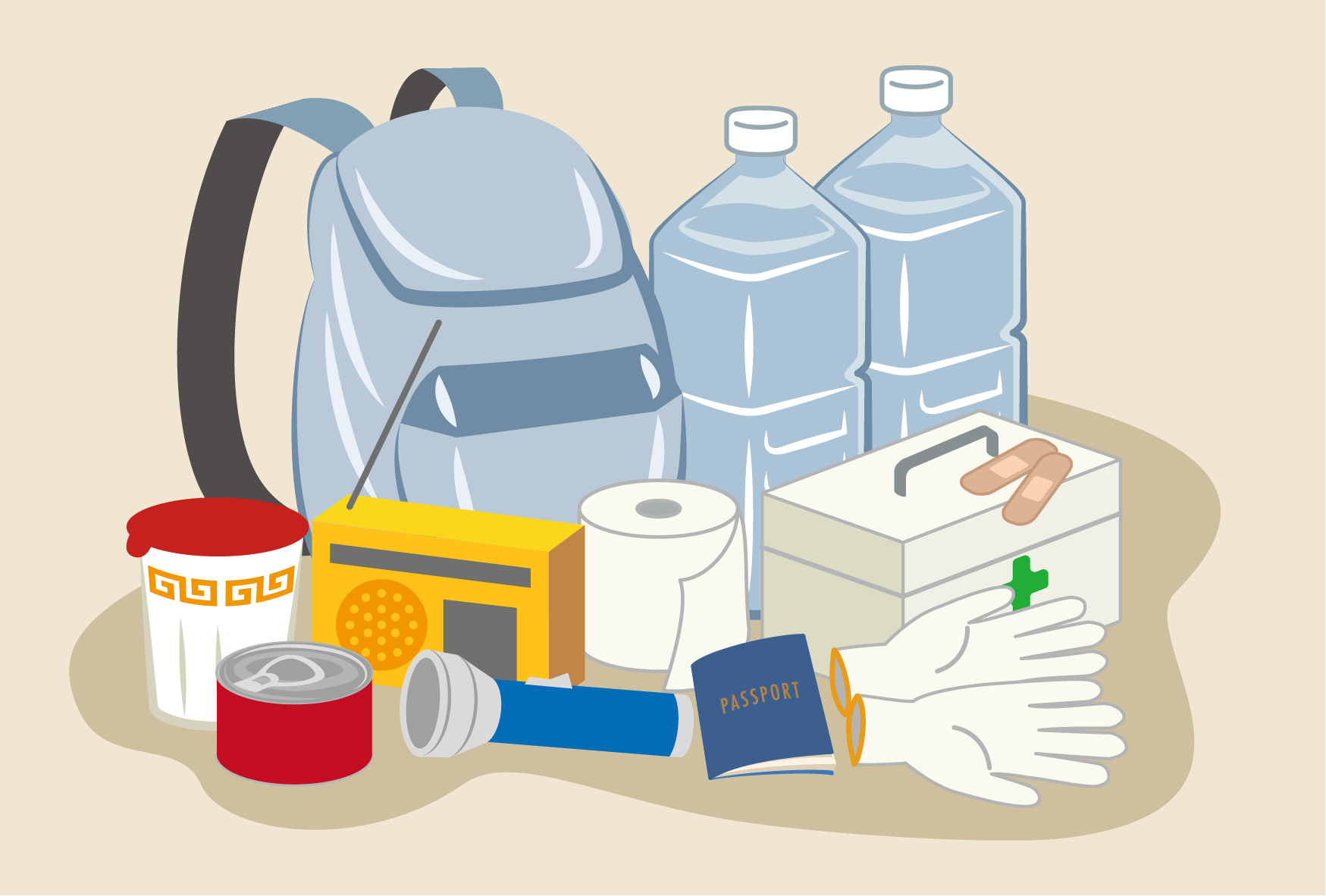
-
-
Evacuation Centers (hinanjo) are mainly aimed at accommodating people who cannot stay in their own home because it has been damaged or destroyed.
Tourists (and other short-term visitors) should go to a Temporary Shelter (ichiji taizai shisetsu) (schools, city halls, large buildings or facilities, etc.).
Temporary Shelters will have food, drinking water, blankets and toilet facilities.You can see where Temporary Shelters are located on the Tokyo Metropolitan Prevention Map. If you do not have internet access, ask someone in your area for help.
■Tokyo Metropolitan Prevention Map (Disaster Prevention Division, Bureau of General Affairs, Tokyo Metropolitan Government)https://map.bosai.metro.tokyo.lg.jp/
(Machine translation only - English, Chinese, Korean) -
-
People with disabilities can go to Evacuation Centers (hinanjo). When arriving, speak to reception staff about any special needs you may have.
-
Evacuation Centers that can better cater to the needs of those with disabilities are called Welfare Evacuation Centers (fukushi hinanjo).
Welfare Evacuation Centers are often prepared a little after a disaster has occurred.To find out about Welfare Evacuation Centers, ask Evacuation Center staff or the city office.
☞ Glossary: Welfare Evacuation Centers
-
-
Special arrangements for foreign residents vary between Evacuation Centers (hinanjo).
If you have special needs relating to religious beliefs (such as requiring a place for prayer, or having special dietary requirements), or have symptoms relating to an illness, or any other concerns, please ask Evacuation Center staff.
-
When evacuating, avoid using a car.
If a lot of people attempt to evacuate by car, roads will become inaccessible to emergency vehicles (ambulances, fire trucks and police cars).
During heavy rains and typhoons, cars may also become inundated.
Also, when a major earthquake (Seismic Intensity 6 Lower (shindo 6 jaku) or higher) strikes Tokyo, cars coming from outside cannot enter the city past Ring Road No.7 (kannana-dori). Major roads will be closed.
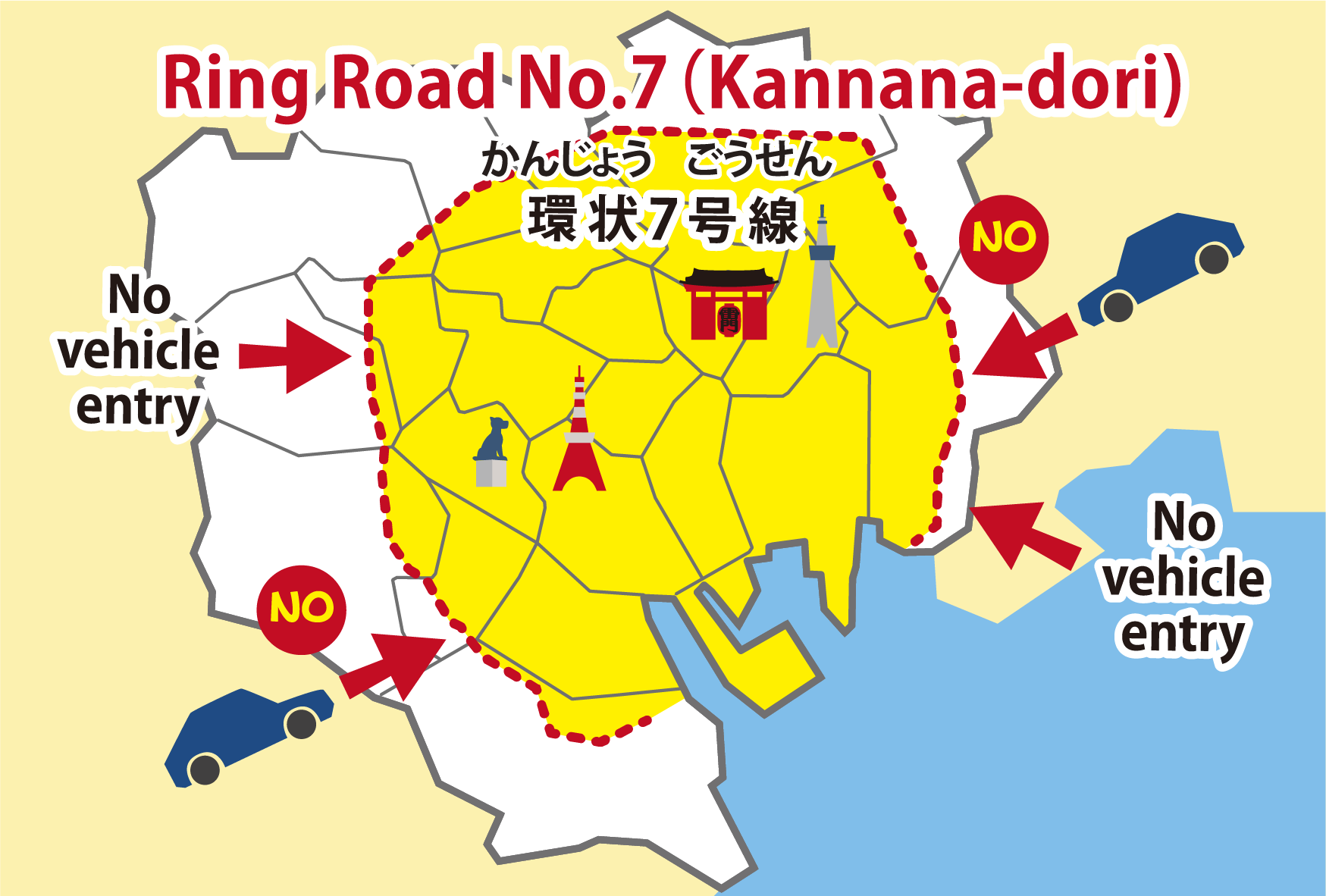
-
Turn on hazard lights, gradually reduce speed, and wait for shaking to subside.
When shaking has stopped, park the vehicle in an open area or on the left side of the road.
To allow emergency vehicles (ambulances, fire trucks and police cars) to pass, when leaving your vehicle, make sure it can be moved if necessary.
Leave doors unlocked and leave the keys behind, along with your contact information.
Take any valuables and your vehicle's inspection certificate with you.☞ Glossary: Vehicle Inspection Certificate
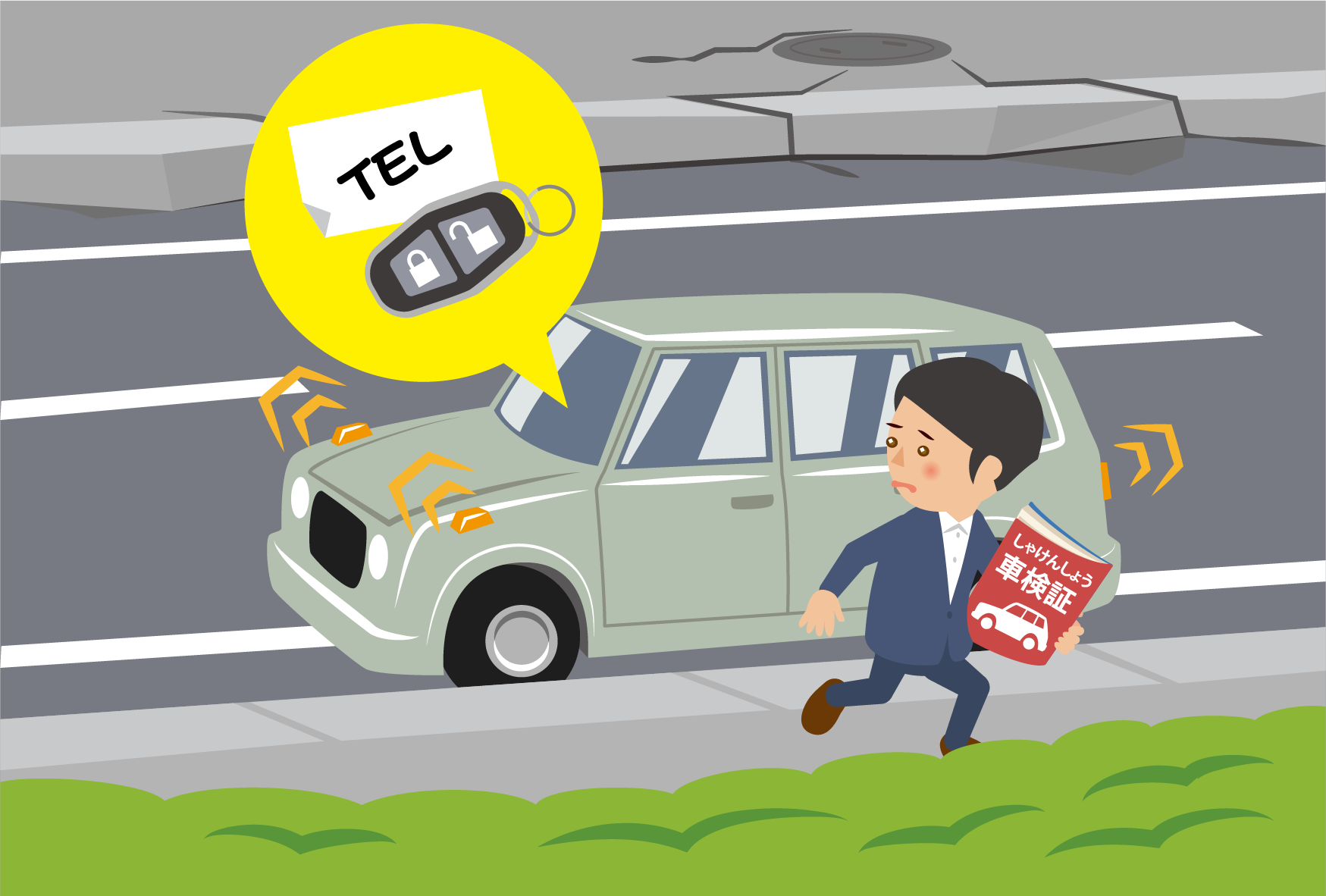
-
-
After a major earthquake, a person registered with the Tokyo metropolitan government will come to determine if your home is safe or not. This is called a Post Earthquake Quick Inspection of Damaged Buildings (oukyuu kikendo hantei).
When the inspection is carried out, a red, yellow or green sign will be stuck to your home.
Red: The home is dangerous, so you should not enter.
Yellow: Take great care when entering the home.
Green: Damage to the home is minor. It is okay to enter the home.
Consider whether you need to evacuate based on your home's evaluation.
☞ Glossary: Post Earthquake Quick Inspection of Damaged Buildings
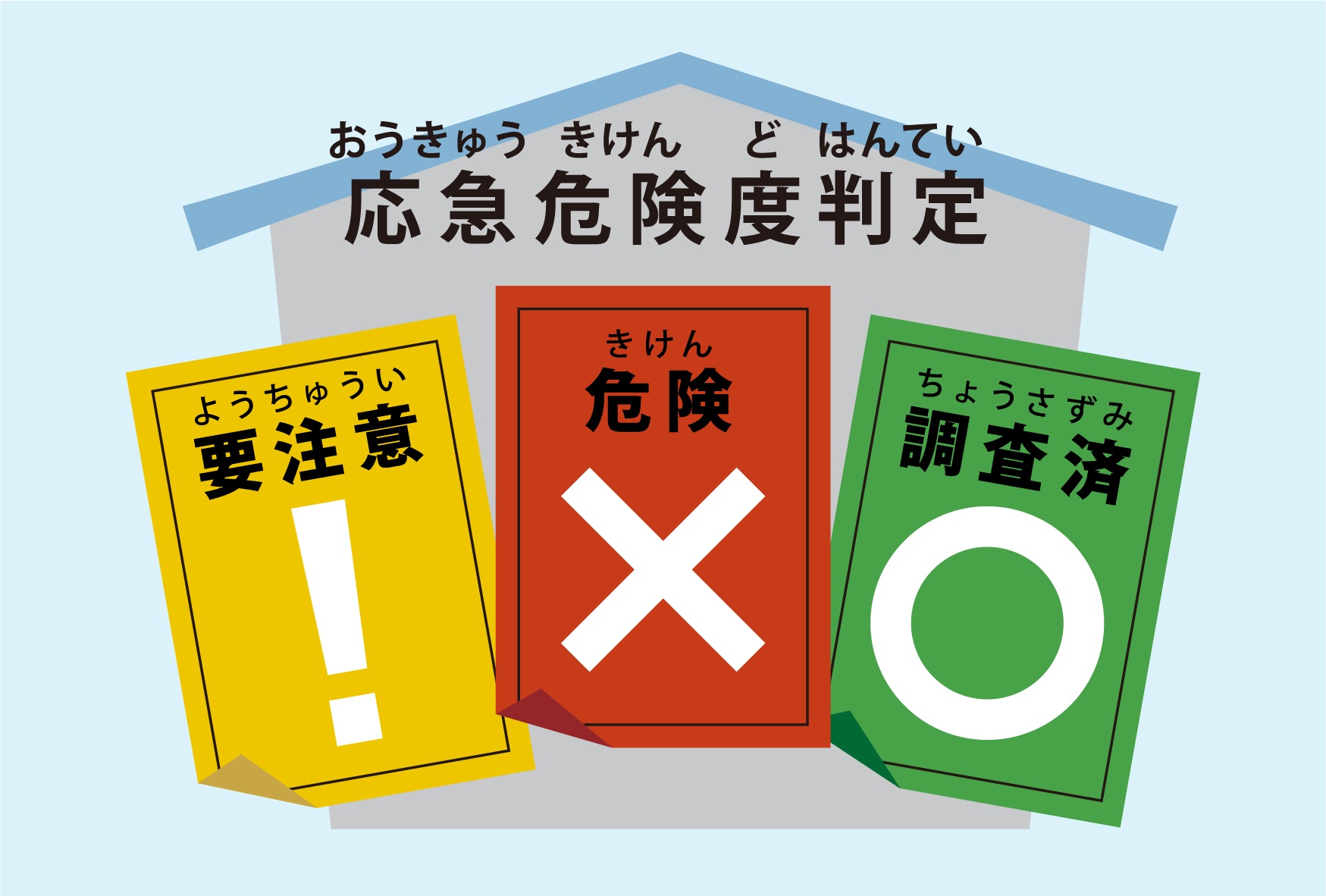
-
You can stay at an Evacuation Center (hinanjo) when you cannot use electricity, gas or water in your home, or you are worried about another disaster striking soon.
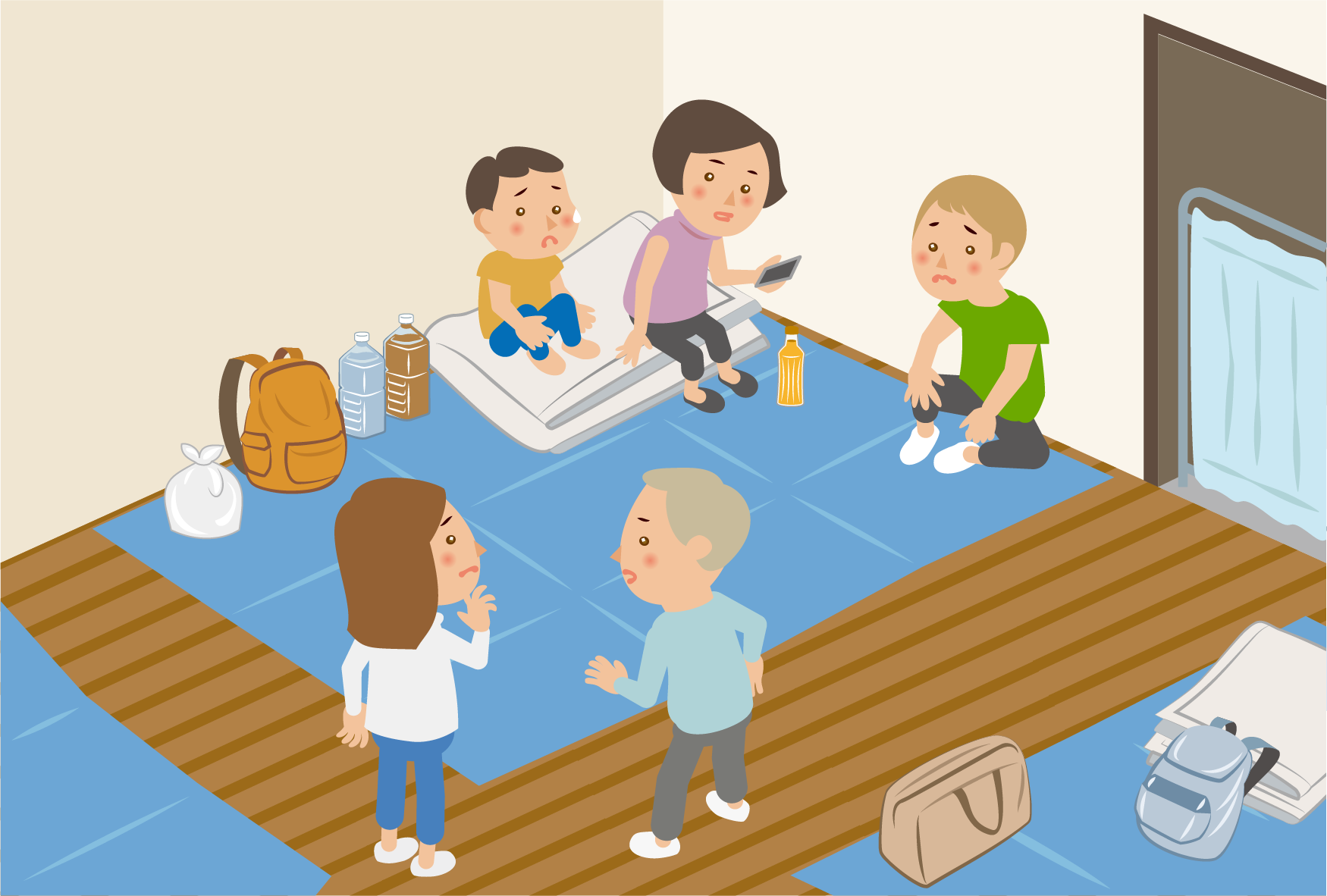
-
However, staying at an Evacuation Center means living with a large number of other people, which can be stressful.
Also, even if you are staying at your own home, you can often receive food, etc. at an Evacuation Center.
Stay at your own home when it is safe to do so, and if not, consider staying at a friend or family member's home instead of an Evacuation Center where possible.
-
-
-
Be aware of the following points after a major earthquake.
- There may be aftershocks (yoshin). Take care when approaching your home.
- There may be a tsunami on the way. If you live close to a river or the sea, confirm that no tsunami is expected before you go.
-
After a major earthquake, a person registered with the Tokyo metropolitan government will come to determine if your home is safe or not. This is called a Post Earthquake Quick Inspection of Damaged Buildings (oukyuu kikendo hantei).
When the inspection is carried out, a red, yellow or green sign will be stuck to your home.Red: The home is dangerous, so you should not enter.
Yellow: Take great care when entering the home.
Green: Damage to the home is minor. It is okay to enter the home.☞ Glossary: Aftershock, Tsunami, Post Earthquake Quick Inspection of Damaged Buildings

-
After heavy rains and typhoons, confirm there is no risk of landslides or flooding before you go.
-
-
After a major disaster, if many people try to return home at the same time, the areas around stations and major roads can become overcrowded and dangerous.
Avoid rushing to other locations, and instead find a safe place to wait.
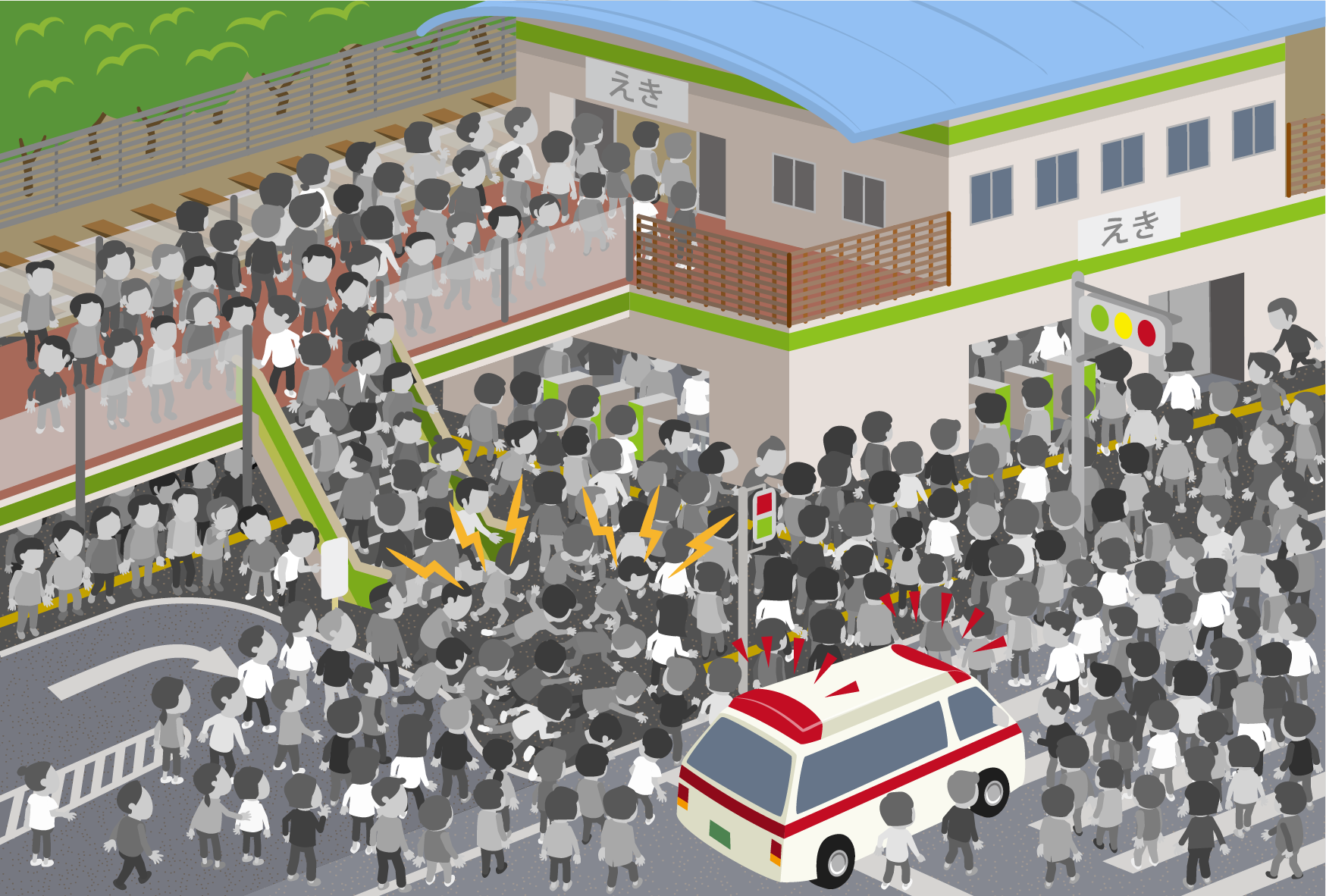
- When at work or school
Stay at your workplace or school for around 3 days. Companies and schools may have drinking water and food for use in emergencies. Ask a staff member for information.
-
When far from home
Go to a Temporary Shelter (ichiji taizai shisetsu) (schools, city halls, large buildings and facilities, etc.). They will provide food and drinking water.
Blankets and toilets are also available for use.
-
When returning home
Before heading home, check the status of roads, trains and buses. Do not return home until you know that the roads are safe.
When returning home, stick to major roads.
Avoid returning home at night.
When returning home, you can receive tap water and use toilet facilities at "Support stations for those attempting to return home during a disaster".
You do not need to pay money.
Support Stations can be identified by this mark.
Convenience stores, gas stations and family restaurants are commonly Support Stations.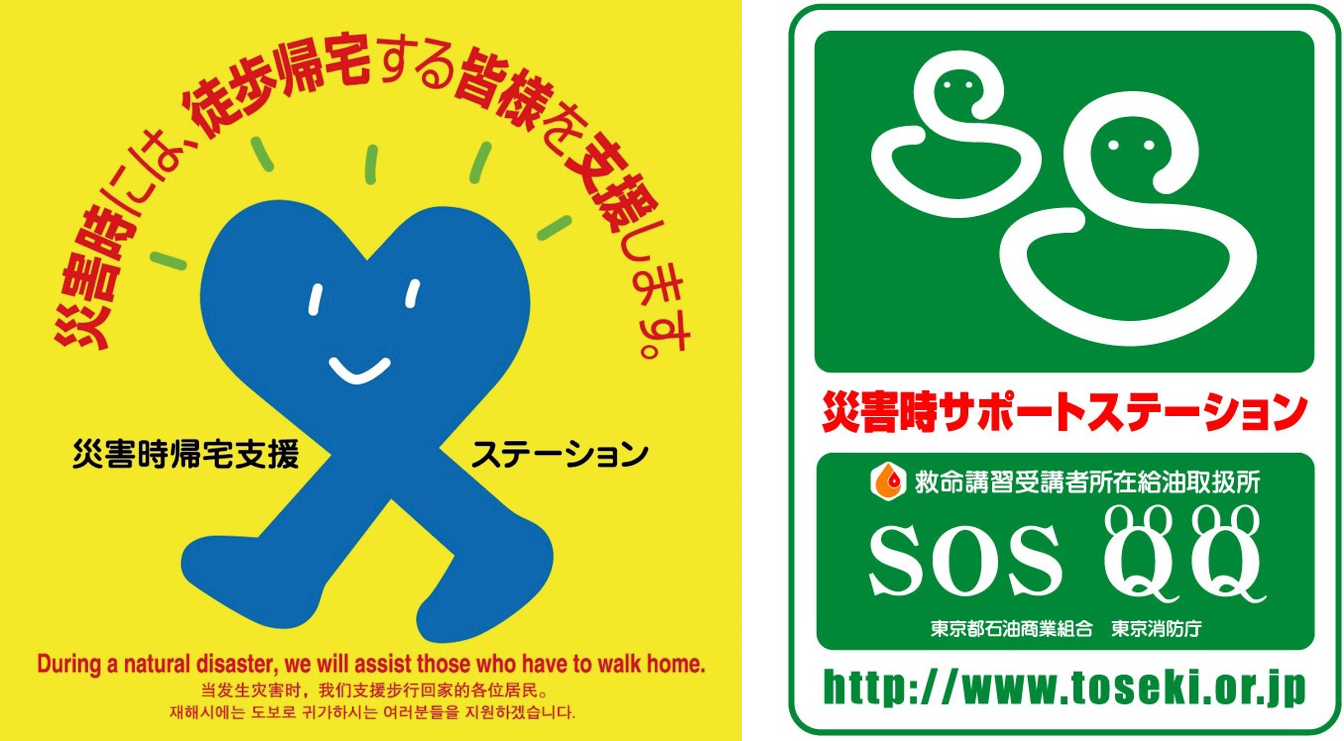
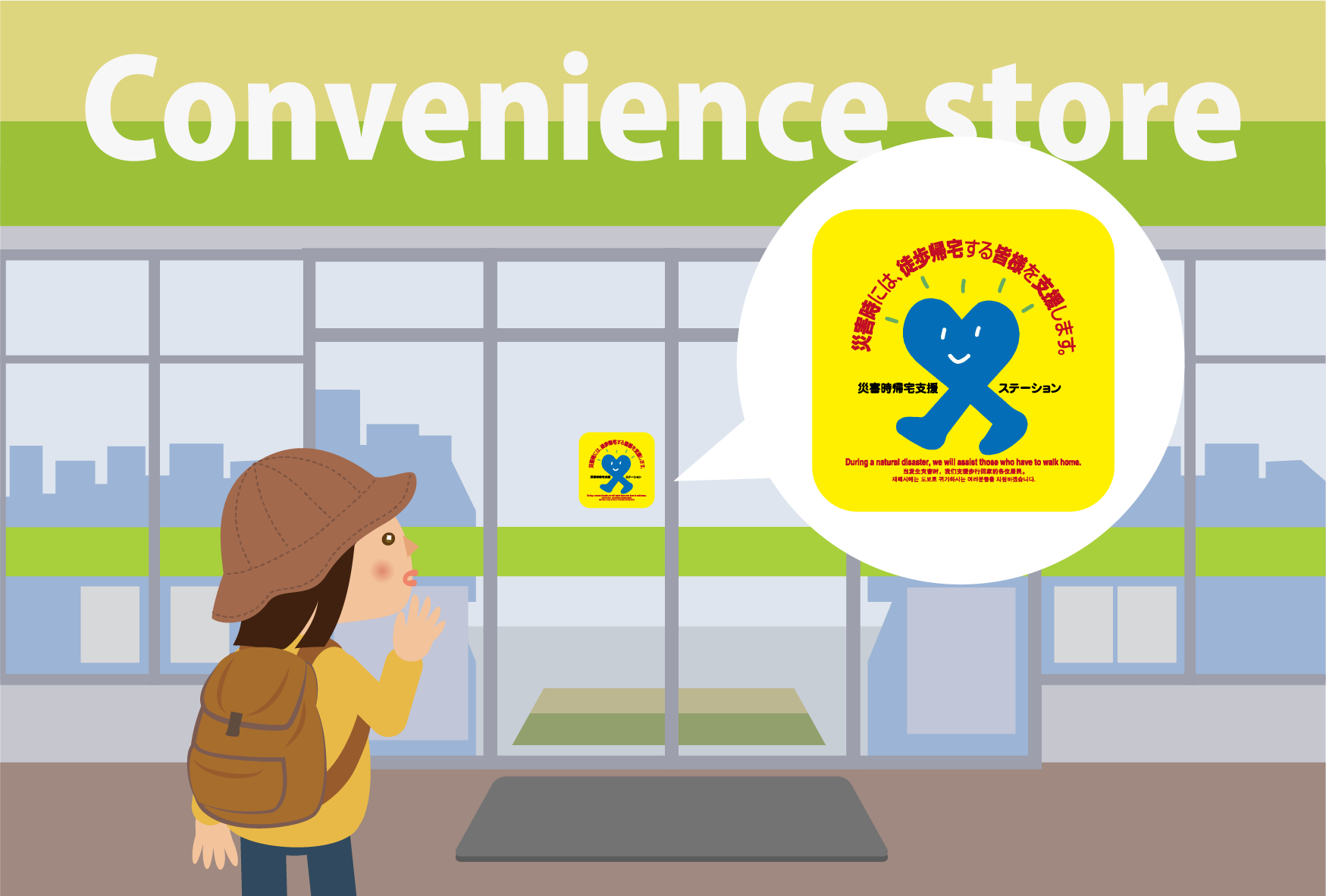
The locations of Evacuation Centers, Temporary Shelters and Support Stations can be found on the Tokyo Metropolitan Prevention Map.
■Tokyo Metropolitan Prevention Map
If you do not have internet access, ask someone in your area for help.
(Disaster Prevention Division, Bureau of General Affairs, Tokyo Metropolitan Government)https://map.bosai.metro.tokyo.lg.jp/(Machine translation only - English, Chinese, Korean)
- When at work or school
-
-
It is likely that you will be able to receive food, etc. at a local Evacuation Center (hinanjo).
Let a member of staff at the Evacuation Center know that you are staying in your car, and ask when food, etc. will be available. -
If you remain in your car without moving for an extended period, you may develop a blood clot that could kill you if it blocks your lungs. This is called deep vein thrombosis (DVT, also known as "economy class syndrome").
Take the following steps to avoid developing deep vein thrombosis.
- Every 2-3 hours, spend some time doing foot rotations and stretching your legs.
- Drink a lot of water.
- Avoid smoking and drinking alcohol.
- Wear loose-fitting clothing.
- When sleeping, put the seat back and elevate your legs (you can use a bag etc. for this).
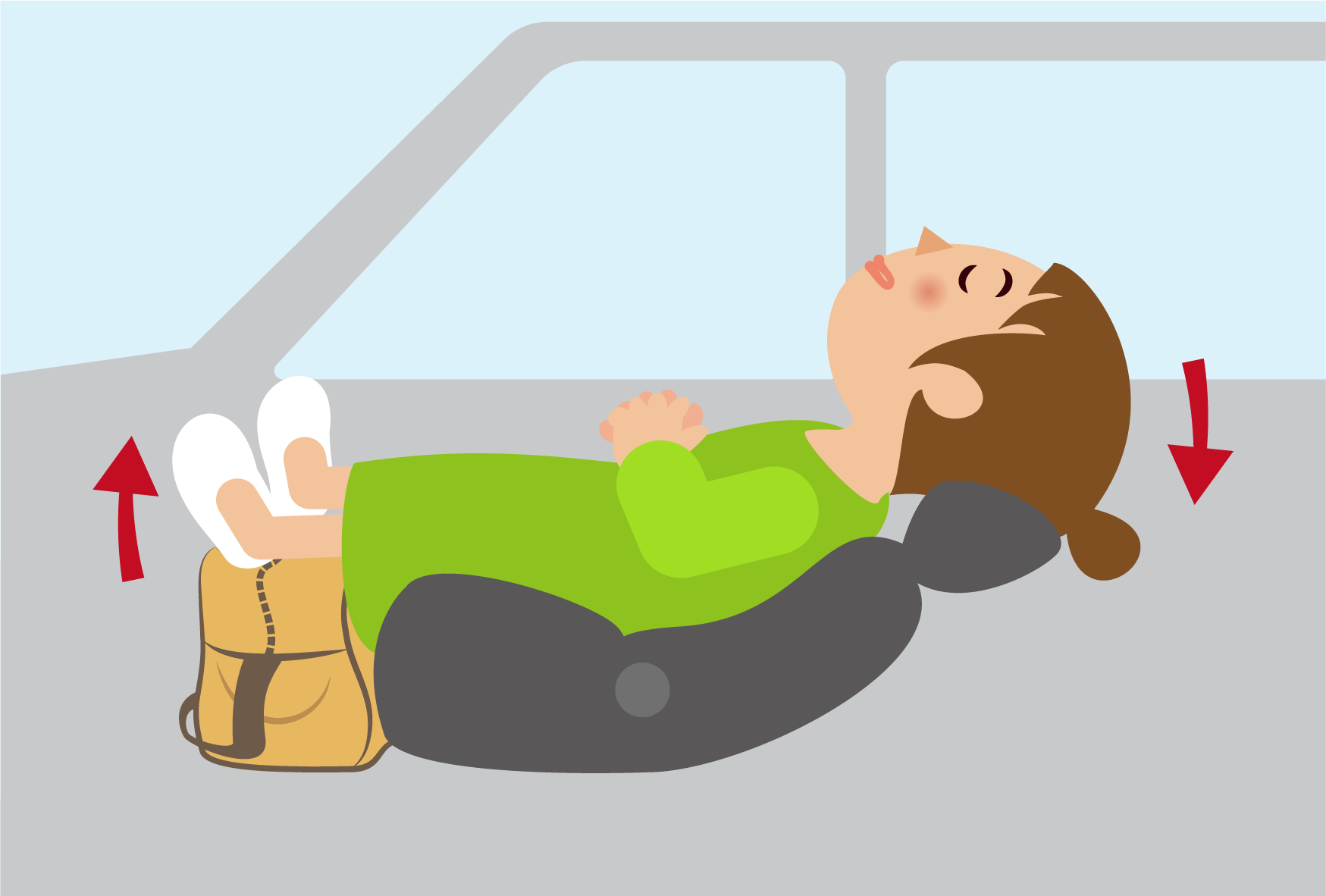
-
-
After a large-scale disaster, embassies may charter flights home for foreign nationals. For details, contact your country's embassy.
■Embassies and Consulates in Japan (Ministry of Foreign Affairs)
For information on embassies and consulates in Japan, see the following page.https://www.mofa.go.jp/mofaj/link/emblist/index.html(Japanese)
https://www.mofa.go.jp/about/emb_cons/protocol/index.html(English)
